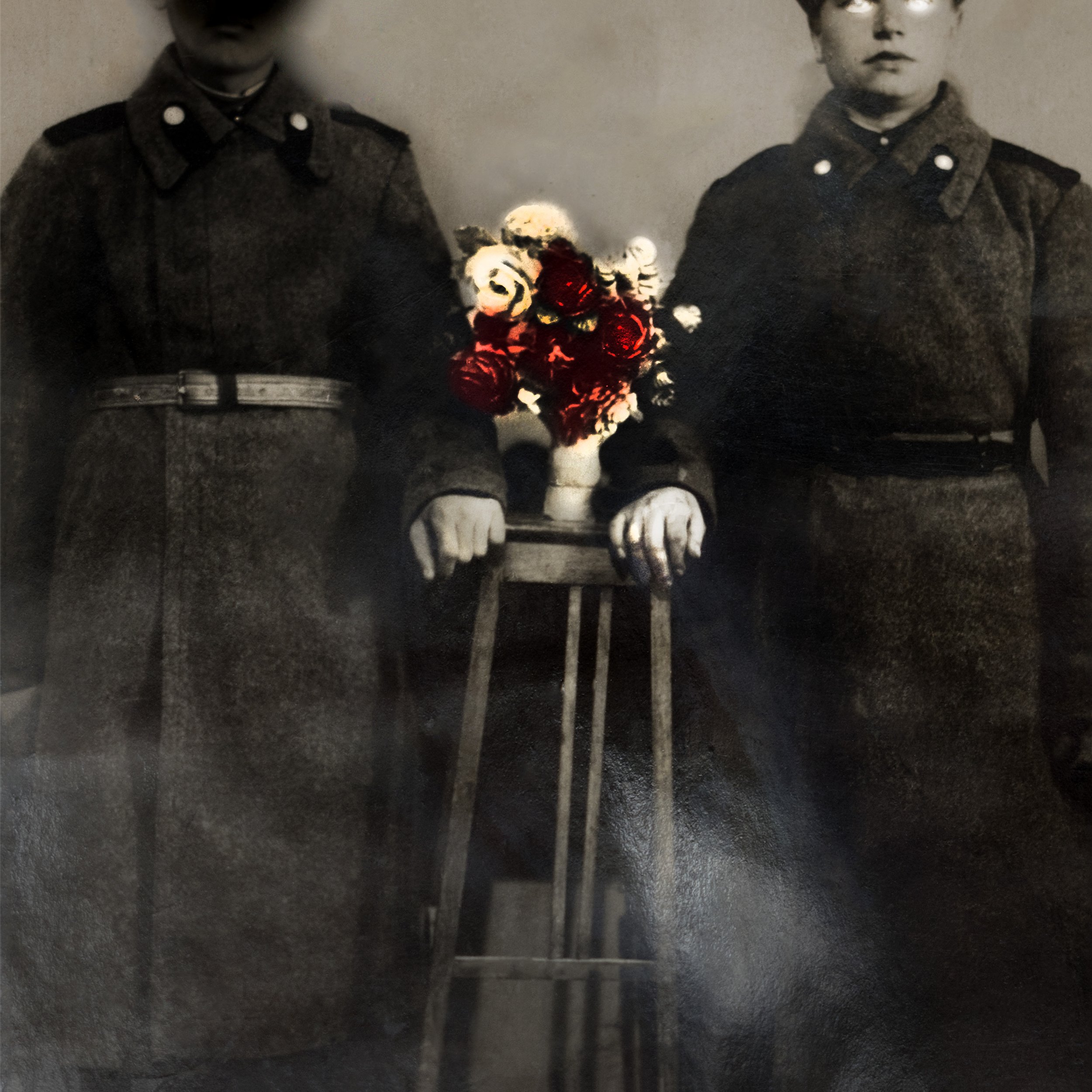
Looking back at history, specifically that of Soviet Ukraine, I was triggered by the government’s systemic repression of the Ukrainian cultural and political class, and its destruction of the idea of a Ukrainian national identity – cultural genocide. These government approved programs, led by Stalin and the Soviet Politburo, necessitated the elimination of landowners, intellectuals, spiritual leaders, and their families. Fear, mistrust, and the pressure to conform pervaded all levels of society. This genocidal program culminated in the 1932-1933 artificial starvation of more than 5 million people in Ukraine.
The photograph is implicated in this process. I refer to it as the “soft tool” of genocide which serves the erasure of purged figures, censorship, surveillance, documentation, and intrusion in private lives. In Erasure: Memory and the Power of Politics, I combine the fragments from my mother-in-law’s box with vintage photographs from my collection and my recent work in Ukraine where I conducted research, recovered an archival photographic collection, and photographed the landscape. The images presented as objects and portraits, as if layers of trauma, work to convey the individual and collective lived experience perpetrated by a system that failed its people while the stagecraft of international political and economic powers normalized genocide.












